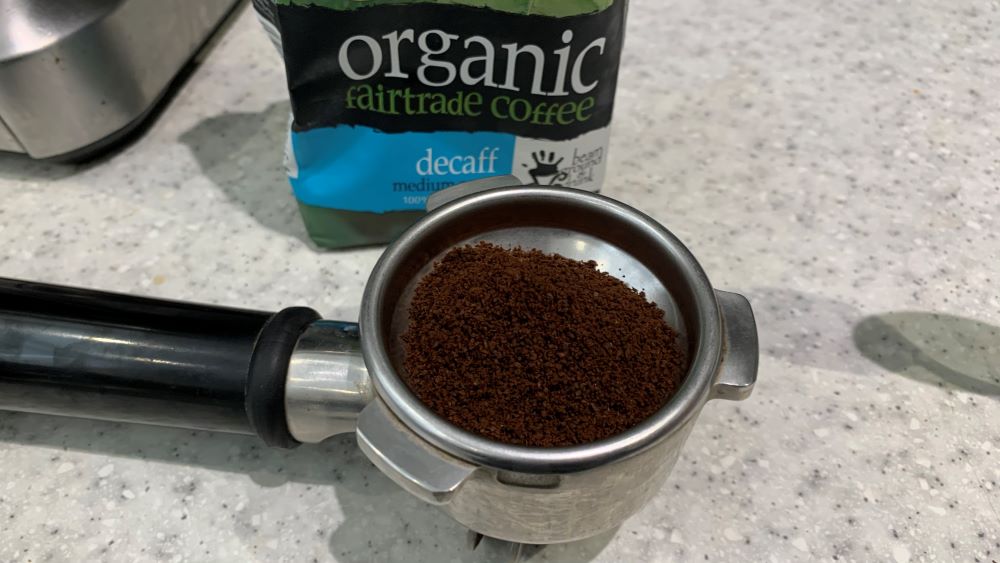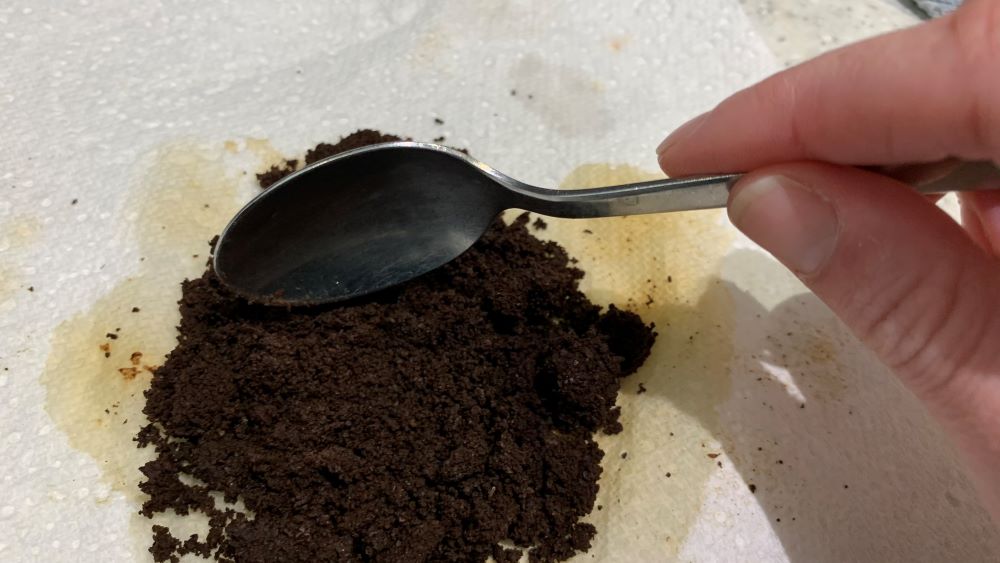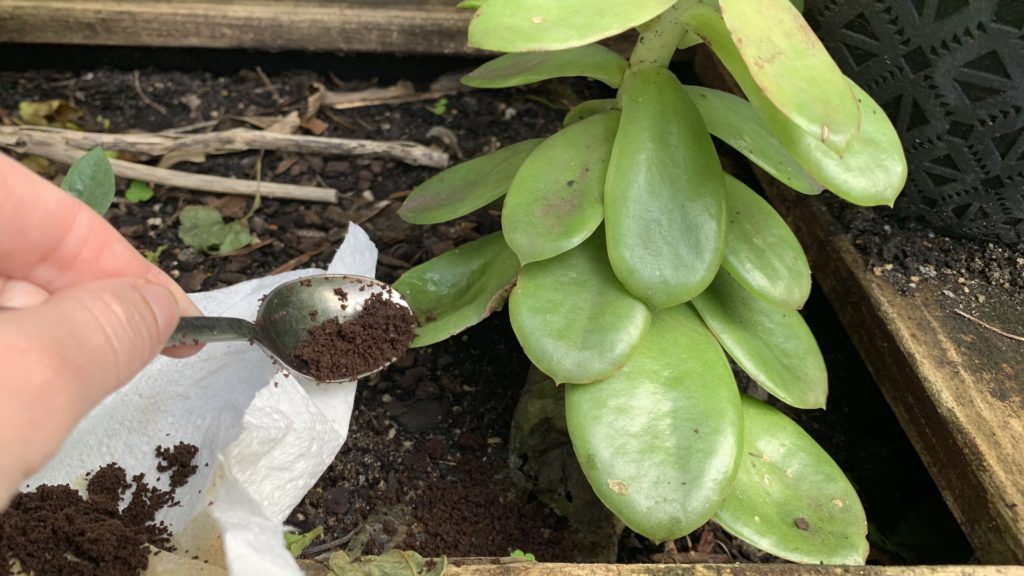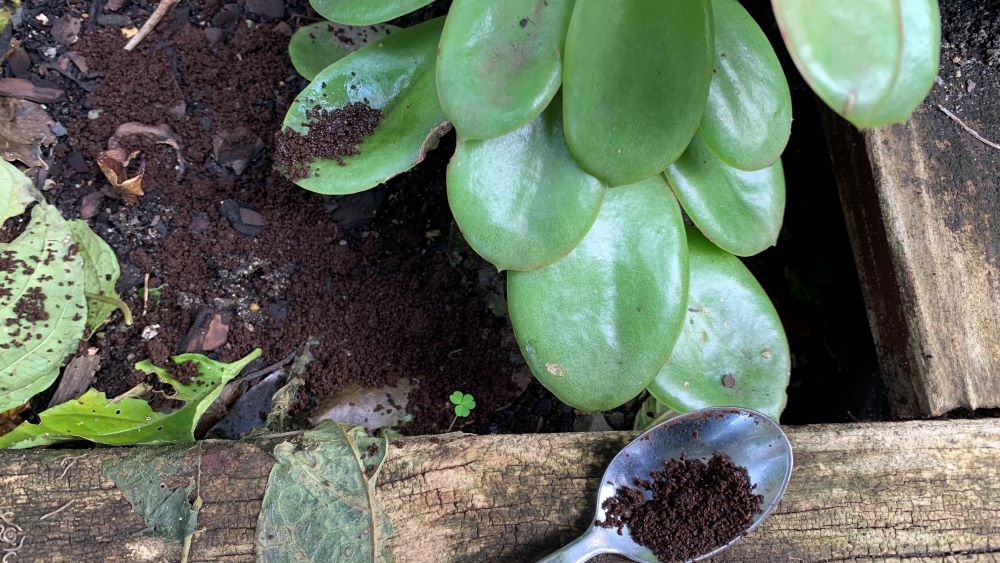Coffee grounds contain a range of nutrients that can benefit plants including nitrogen, iron, calcium and potassium. The nutrients will be released into the soil when the coffee grounds are broken down by soil bacteria. This process can be sped up by breaking down coffee grounds in your compost first which can reduce the acidity levels and break down any chemicals left in the coffee.
This article will explore if coffee grounds are good for plants, how to use them for maximum benefits, plants that you should not add them to and plants that love them.

Benefits of coffee grounds for plants
Coffee grounds can be good for plants and the soil as they can add extra acidity, they can be used as a slug and snail repellant, they will add organic matter to the soil and essential nutrients the plant needs to grow well.
1. Coffee grounds add organic matter to the soil
Coffee grounds are a natural material that will naturally break down in the soil. The added organic matter will help to improve soil drainage and feed soil bacteria. Worms will feed on these soil bacteria which will help to aerate the soil and will allow plant roots to spread further and get the nutrients they need.

2. Coffee ground swill add nutrients to the soil
Coffee has a range of nutrients that can gently feed plants. Here are the most common nutrients found in coffee grounds and how they are good for plants.
| Nutrient in Coffee Grounds | Benefits for Plants |
| Nitrogen | Coffee ground contain around 2% nitrogen which is needed for good leaf growth. Nitrogen is needed in the formation of chlorophyll in the leaves. This is the green pigment that allows the plant to use sunlight to combine with carbon dioxide and water to create carbohydrates. As the coffee grounds are broken down by soil bacteria they will release the nitrogen making it available for the plant which can improve growth. |
| Magnesium | Coffee ground contain varying levels of magnesium which is used to develop the chlorophyll in their leaves. Magnesium is an essential nutrient needed for plant growth and coffee grounds are a great way to add small amounts to your soil naturally. |
| Calcium | Trace amounts of calcium can exist in coffee grounds. Calcium is needed for the growth of the plant tissues and will help it to grow larger and stronger. |
| Iron | There can be small amounts of iron in coffee grounds. The soil bacteria will break down the coffee ground particles releasing the iron in a form that the plant can absorb. This is a slow process but over 3-6 months the coffee grounds will be broken down and released into the soil. |
| Potassium | There are varying amounts of potassium in coffee grounds depending on how it has been grown and processed. Potassium is essential for the movement of nutrients, water and carbohydrates throughout the plant. Without adequate amounts of potassium, the growth of your succulents will slow. |
3. Coffee grounds can acidify the soil
Coffee grounds can have a pH value that varies anywhere from slightly basic to acidic. The majority of coffee grounds will be on the acidic side however, ranging from a pH of 5-6.5. The only true way to know the pH of the individual grounds you are using is to test them with a pH kit.
Coffee grounds are most often acidic so they can be of great benefit to acid loving plants. Azaleas, rhododendrons and blueberries all love soil that is slightly acidic.
4. Slug and snail repellent
Used coffee grounds can be a great way to keep slugs and snails off your plants. Sprinkle the used coffee grounds in a circle around your plant 2 inches wide. Slugs and snails will avoid the area.
You can also make a coffee spray. Add 1 shot of coffee to a spray bottle and spray it all over the mulch around your plants. The caffeine will be absorbed by the slugs and snails killing them.
How to use coffee grounds on plants
Here are the top 3 ways to use coffee grounds on plants without harming them.
1. Sprinkle used coffee grounds around the root base
For hardy outdoor plants you can sprinkle used coffee grounds around the root zone. Large trees and established shrubs will benefit from a light sprinkling of coffee grounds as a light mulch. Mixing it in with straw, bark mulch or sugar cane and surround your plants.
For more on how to use coffee grounds in the garden check out this video.
2. Turn coffee grounds into compost
Adding coffee grounds to your compost is a great way to allow the soil microbes to break down and release the nutrients in the coffee and break down any residual chemicals.
Mix a small amount of coffee grounds into your compost mix. Adding up to around 5% of the mix as coffee grounds will keep the coffee in balance. Coffee grounds are considered green material because they contain nitrogen so balance them by adding 2 parts brown material like fall leaves, straw or hay.
Mix the coffee ground through thoroughly and allow it to break down for 6 months.
3. Use it as a snail and slug spray
Mix a shot of coffee in with water in a spray bottle. This spray mix can be sprayed onto the mulch around the plants that are being attacked and eaten by slugs and snails. When the slugs and snails crawl over the coffee spray they will absorb the caffeine which will kill them.
What plants can I put coffee grounds on?
Here are the main categories of plants that coffee grounds are good for.
Outdoor hardy plants
Sprinkle coffee grounds around outdoor, established plants with healthy root systems. Coffee grounds can carry residual chemicals that can harm some delicate plants. Large healthy plants will not be harmed by a light sprinkling of coffee grounds around the mulch.
Mix the coffee grounds in your compost pile and top dress your more delicate plants. Allow the coffee grounds to break down for at least 6 months before adding it to your soil. This will help to release the nutrients and break down any chemicals that could harm plants.

Acid loving plants
Plants that like acid like roses, azaleas and blueberries will all like a light sprinkling of coffee grounds around your plants.
Plants that don’t like coffee grounds
It is important not to add too many coffee grounds directly to plants that prefer alkaline soils or that are sensitive to chemicals in the soil. This includes tomatoes, lavender, rosemary, thyme, sage, salvia orchids, indoor plants like pothos and monstera.

Avoid adding coffee grounds directly to indoor plants as they will not have the mix of soil bacteria needed to break down the coffee grounds to release the nutrients. The coffee grounds can just sit on the soil surface and any residual chemicals will wash down to the roots.
Can you put coffee grounds directly on plants?
Coffee grounds can be added in small amounts to hardy plants outdoors. When the coffee grounds can be broken down by soil bacteria they can be incorporated into the soil and the nutrients will become available for plants to absorb.
You can put small amounts of coffee ground around the root zone of established healthy plants, particularly those that like acidic conditions. This includes roses, azaleas and blueberries.

Are coffee grounds good for potted plants?
Coffee grounds should not be added to potted plants as the soil will not contain the complex mix of soil bacteria needed to break it down. The chemicals and acidity can be too much for potted plants so it is best to avoid adding it directly.
You can add coffee grounds to potting soil if it has been broken down in compost first. Mix small amounts of used coffee grounds into your compost pile with brown materials like fall leaves, straw or sugar cane mulch.
After 6 months you can mix the compost through potting soil in a ratio of 1:4. The potted plants will get the benefit of the nutrients in the coffee and you will have avoided adding the coffee grounds to landfill.
Can you put too much coffee grounds in your garden?
You can put too much coffee on your garden and plants. Some coffee mixes can be highly acidic and can damage plants over time. Some coffee can also contain residual chemicals which can harm sensitive plants. The safest way to add coffee grounds is to break it down in compost first and then mix it into the soil.
Are Coffee Grounds Good for Plants? | Summary
Coffee grounds contain many nutrients that plants love including nitrogen, iron, calcium and phosphorus. Break down the coffee grounds in your compost to neutralize acidity and allow microbes to break down the components to release the nutrients in a form that the plants can absorb. This will also help to reduce any chemicals that can be leftover after the coffee processing.
Coffee grounds can be great for plants if added in small amounts. Avoid adding coffee grounds to plants that prefer neutral or alkaline soils like Mediterranean plants.
I am an accredited practicing dietitian, experienced gardener and a dedicated cook. I love writing and sharing my experience so you can learn from my successes and mistakes.
